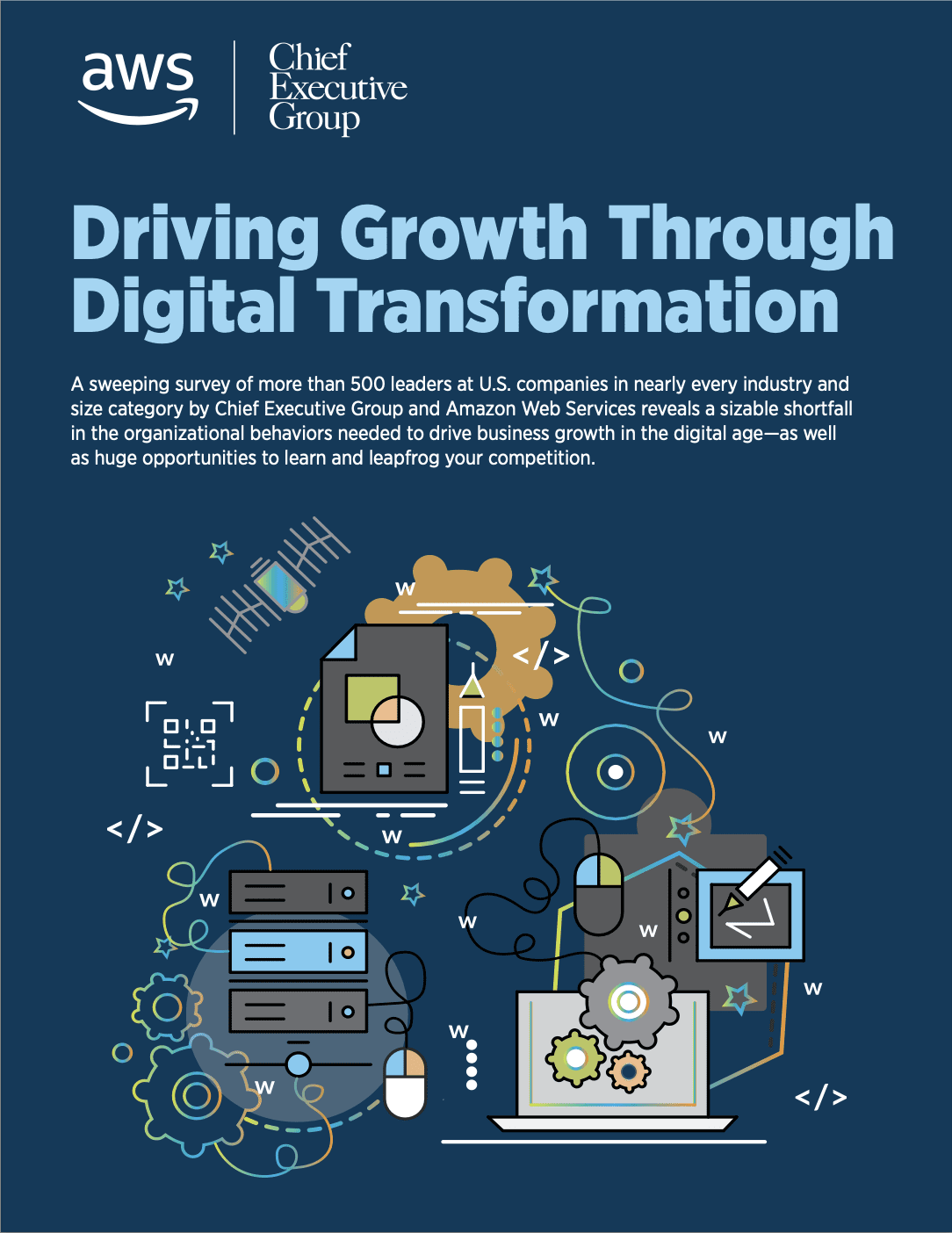Perhaps the biggest question to emerge from the research is the one that’s proven the hardest to answer: Why, despite a decade or more of effort, are so many companies still lagging when it comes to digital transformation? In the interviews conducted as part of this investigation, of those who said they were behind the state of the art—or behind even where they thought they should be—few could really articulate why a more data-driven culture had not taken hold in their organizations. “One of my favorite questions to ask for the last few years is, ‘What problem are we trying to solve?’” says AWS Enterprise Strategist Phil Le-Brun. “Often, we race into solutioning a poorly defined problem. It’s not uncommon to launch into a transformation effort without fully understanding, or agreeing on, what success looks like.”
Complicating matters further, the data also suggests that many senior executives believe they are on a path to transformation, yet their reported behaviors don’t support that view. While more than half of those surveyed listed growth through either new (28 percent) or existing (36 percent) products or markets as their company’s top priority for the year ahead, the vast majority lacked the behaviors, processes and organizational structures exhibited by companies that have really harnessed the power of digital transformation for growth.
That’s because many companies are putting the technology before the business—and therefore the cart before the horse, says AWS Enterprise Strategist Jonathan Allen. “It’s nice to think that everyone starts a transformation journey at the same logical time and place, and it’s easy to assume everyone understands ‘the why’ and ‘the how’ of that transformation. But even leadership teams that are seemingly aligned—and I have sat on many—often ‘think’ they are agreeing on the scope of the same problem but never actually have the conversation to align properly and calmly on the ‘why’ and the ‘how’ in the clear contextual map of the world their business lives in.”
























































![LinkedIn Provides Thought Leadership Tips [Infographic] LinkedIn Provides Thought Leadership Tips [Infographic]](https://imgproxy.divecdn.com/sGPjK1VM5eAOI_l-OTkmJTV2S8dHIfUwFmDwPWjhfjg/g:ce/rs:fit:770:435/Z3M6Ly9kaXZlc2l0ZS1zdG9yYWdlL2RpdmVpbWFnZS9saW5rZWRpbl90aG91Z2h0X2xlYWRlcnNoaXBfaW5mbzIucG5n.webp)













